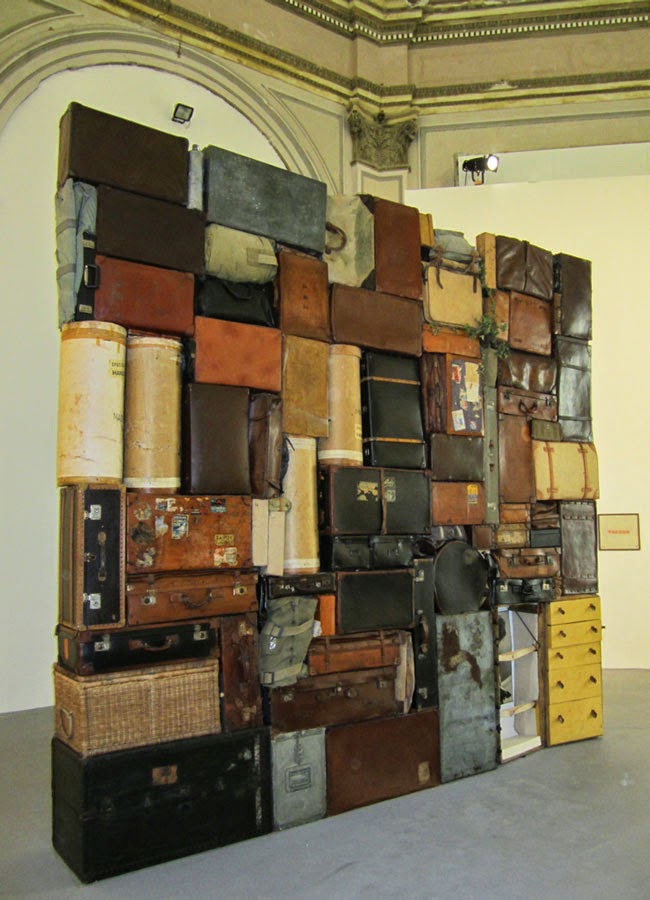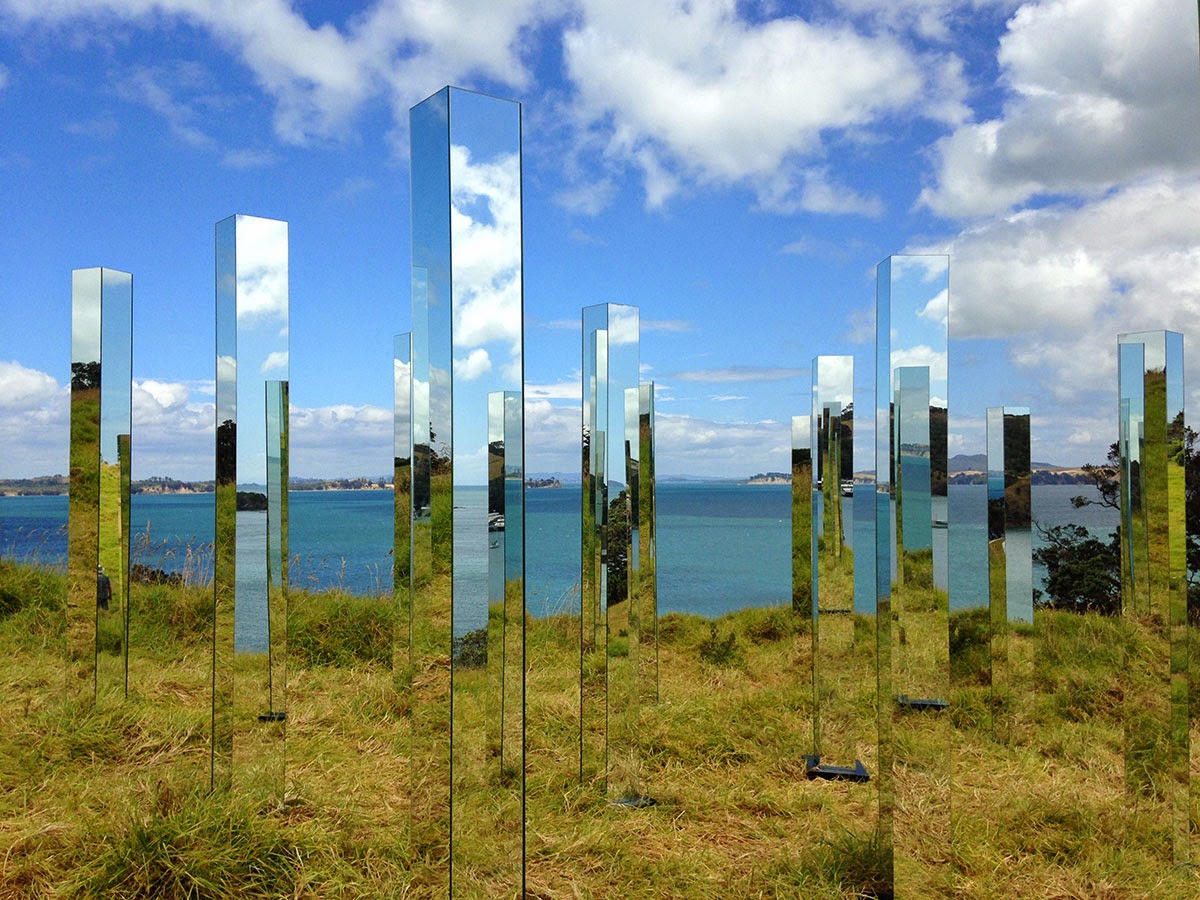For the Japan Pavilion, Chiharu Shiota has created a magical grotto from every day materials: red string and old keys. As in earlier installations, the artist transforms the rational geometric spaces of the gallery by stretching thousands of different lengths of string from the ceiling to points on the walls, floor and objects. This repetitive weaving process builds up complex and overlapping layers, forming intimate, immersive, and cave-like spaces that invite exploration and provoke feelings of wonder and delight. The webs of red string filter and reflect the light; making the space glow with a gentle pink like a strange underwater world. Where the layers of string are densest, the color coalesces into the strong bright red of blood emerging from a fresh cut.
Two humble wooden boats float in the center of the room and the
layers of string and suspended keys form a vortex of energy around each one. Keys dangle everywhere and spill onto the floor – 180,000 were collected in
donation boxes placed in museums in Germany (the artist lives in Berlin)
as well as the United States and Japan.
Sometimes a lone key hangs from a single strand, sometimes a group of
keys is clustered together. The keys are mostly antique in style and bear a dark
patina of age.
This beautiful installation was one of my favorites. Before reading the artist’s statement, my associations are
from the world of fairy tales: the heavy bunch of keys that Blue Beard gives to
his wives, allowing them to open the doors to every room in his fortress but
one mysterious forbidden one. Little Red
Riding Hood setting off for her journey through the forest labyrinth, where
layers of trees hide many secrets. The
drop of blood in the snow that prompts Snow White’s mother to wish for a
daughter with lips as red as blood and skin as white as snow. The twisting brambles that bury the castle of
an enchanted princess in a dense web of vines and thorns.
Of course, the installation also evokes dark stories from history.
Could these be the keys to doors in the ghost towns of Fukushima, where radioactivity
caused by storm damage to a nuclear power plant has forced more than 50,000
citizens to abandon their homes? Or the keys
that belonged to any of the millions of exiles and refugees dislocated by
violence, economic devastation, or environmental disaster around the globe and
throughout time. These could be the keys that belong to the victims of the Holocaust who once carried the travel-worn suitcases and trunks stacked up to form Fabio Mauri's Wailing Wall, which I wrote about in an earlier post.
In actuality, Shiota has said that she wanted to get away
from these sad associations, which weigh people down, and create a piece that looks
to the future and has a sense of hope.
Of course, Shiota says, the work is also about memory. It would be close to impossible to look at
keys of this sort – which have so much character – and not wonder about their
absent owners. The work’s title, “The
key in the hand” recalls this intimate connection between owner and object,
renewed every time the hand clasps the key to turn it in a lock.
Shiota explained that while she was building the piece, she
imagined the stories attached to each individual key, the stories of the people
who once used them. And she expects that visitors will have this experience as
well: “The keys are carrying a lot of messages from their owners. When people are walking here, it is like
walking around human memory, human life.”
I know it is sentimental, but I feel that “The Key in the Hand” is also about love. Each key could be an emblem of the one who could find a way into another’s heart. Especially these keys, enmeshed in the red color of the boudoir satin and chiffon, and hanging from strings that run like bloodlines, connecting individuals and families.
The title – “The Key in the Hand” – has another meaning for
Shiota. In a video interview on the
Biennale site, Shiota explains: “if you
have a key in your hand, you have a chance.
The future is in your hands. If
you lose a key, this means you lost some way of your life.”
Perhaps this is why Shiota created an introduction or
prologue viewed on the garden terrace area that visitors go through on the way
to the second floor, where the installation is sited. In this cheerful garden area, visitors are greeted
by a 4-channel video – very charming and funny -- of quite young children being
interviewed about their memories of being in their mother’s womb and being
born. Their recollections are full of
love and imagination, promise and spunk.
Nearby, a large photograph is displayed, of a child’s small hands
holding a key. Perhaps Shiota is
suggesting that we are all born with the key we need to unlock our own
future. And if we have misplaced it,
well, we can certainly find another one in her installation upstairs.
More information:
The artist's website: Chiharu Shiota
Biennale Website
Interview with Shiota on the Biennale YouTube channel
A short review with great pictures in Design Boom
More information:
The artist's website: Chiharu Shiota
Biennale Website
Interview with Shiota on the Biennale YouTube channel
A short review with great pictures in Design Boom



























